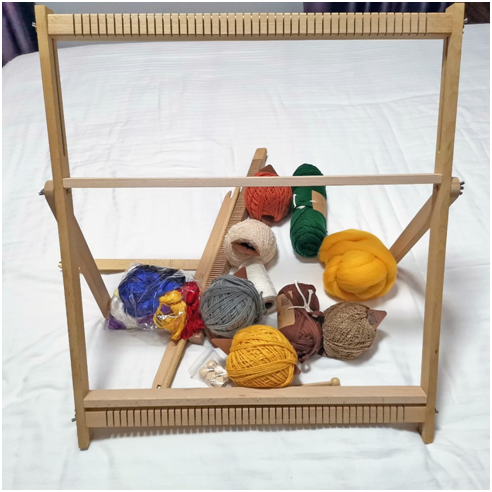
During my fellowship at ANAMED, my research centered on the Byzantine silk industry, covering its institutional frameworks, industrial networks, and, in particular, technical parameters. I wished to advance the existing knowledge by examining the new evidence I collected in my doctoral study, which focused on the region of Central Greece. The first and primary research project was to reconstruct the predominant Byzantine weaving practice by synthesizing textual, pictorial, ethnographic, and archaeological evidence. This project has been presented at several seminars at different stages, and an article about the work will appear in Greek, Roman, and Byzantine Studies this September. In terms of the industrial network in Central Greece, an article concerning the underexplored silk industrial center of Naupaktos was submitted when I had just started my fellowship and is currently under review. This work was also presented in the Society for the Promotion of Byzantine Studies’ Spring Symposium this year. In addition, another article regarding the existence of a silk industrial center in Phokis was revised and submitted and will appear in the June issue of Mediterranean Historical Review. My research on the industry’s institutional frameworks focused on the connection between the local church and the silk industry through a case study of the Theban metropolitan John Kaloktenes (before 1166–ca.1190). An article related to this was accepted by Byzantine and Modern Greek Studies during my fellowship and will be published next year. Apart from the above, an intriguing record from John Apokaukos (ca. 1155–1233) led me to a brief investigation on the myth of thunder in the historical sericulture records of the West. I wrote a blog post on this preliminary study for the ANAMED website. I hope to continue this research and turn it into a journal article soon.
Over the past academic year, I conducted research remotely from China due to COVID-19; the major challenge was the limited access to library resources and historical archives. Luckily, the ANAMED library staff was highly supportive during this period. Also, I benefited from the interlibrary lending service of King’s College London. I am deeply grateful to all the scholars who kindly sent me the materials I needed upon request. Despite the remote nature of this year’s fellowship program, I deeply thank ANAMED for its unwavering support to fellows and for building a sense of community. I feel privileged to be among this year’s excellent group of fellows, from whom I have learned about many exciting projects. I hope I have also done my bit and contributed to the center’s scholarly activities and output. In any case, I can say for sure that my fellowship experience at ANAMED was a fruitful and memorable one.

For the next step, I plan to integrate the aforementioned and rather scattered findings into a bigger picture to see what new perspectives I can contribute to our current understanding of the Byzantine silk industry as a whole. In this vein, I may start with an overview of the silk industry in Central Greece. Moreover, some interesting and potentially informative records I came across during my fellowship still await my perusal. From them, I hope I can uncover new evidence on the Byzantine silk industry and bring more refreshing interpretations to my future research.

